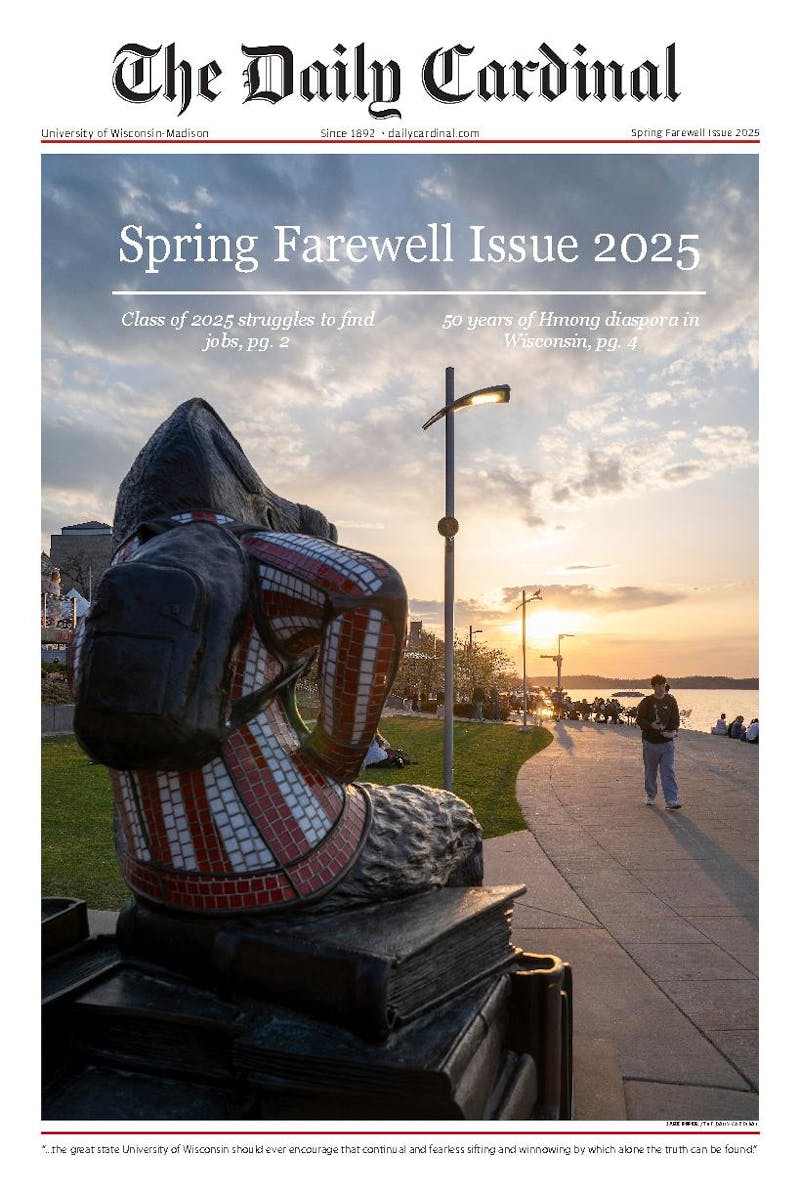UW-Madison researchers in the lab of Dr. James Thomson announced Sept. 3 they had coaxed embryonic stem cells to develop into 'hematopoietic colony forming cells.'
The finding is important because these cells, with the ability to differentiate into any blood cell type, have the potential to be used in transplants and transfusions.
The study, led by UW-Madison scientist Dr. Dan Kaufman, was reported in the proceedings of the National Academy of Sciences. Other members of the research team included Eric Hanson, Rachel Lewis, Dr. Robert Auerbach and Thomson.
UW-Madison researchers are also trying to develop neural cells and pancreatic cells from embryonic stem cells, Thomson said in an interview with The Daily Cardinal. Thomson was the first researcher to isolate human embryonic stem cells.
'This is the first time we are aware that anybody has caused human embryonic stem cells to differentiate purposely into hematopoietic cells,' said Hanson, a co-author of the study.
To stimulate embryonic cells' differentiation into hematopoietic cells, researchers co-cultured them with mouse bone marrow or mouse yolk cells. According to Hanson, a substance in the co-culture stimulates embryonic stem cells to differentiate into hematopoietic cells, with an optimum culture time of 17 hours. However, not all of the embryonic stem cells in the culture differentiated into hematopoietic cells.
'One to 2 percent of the cells from the co-culture were hematopoietic. But there are methods that can be used to form a more pure concentration,' Hanson said.
One method involved attaching iron or another metal onto an antigen that attached exclusively to antibodies on blood cells. A magnet was then used to pull the cells to the top of the culture.
In addition to the hematopoietic cells, researchers also detected the presence of red blood cells, white blood cells and platelets, all of which differentiated from the hematopoietic cells.
'We were able to analyze the components using the genetic markers for white blood cells, red blood cells and platelets, all of which are fully mature cells,' Hanson said. 'The first step is to identify the precursor hematopoietic stem cells. We then allowed them to grow in blood growth factors, which led to their maturation into red blood cells, white blood cells and platelets.'
With the use of hematopoietic cells, in conjunction with other cell types derived from the same line of embryonic stem cells, researchers believe tissue or organ rejection may be prevented after a transplant.
In this process, Hanson theorizes that hematopoietic cells from a stem cell line would be administered to a subject, making that subject a chimera in terms of blood cell production. In other words, the subject would have two genetically distinct blood cell types.
'If you can create human chimera blood cells with more than one histocompatibility complex that can recognize other cells as self, you can circumvent rejection of organs,' Hanson said.
Specifically, pancreatic islet cells, cells that produce the hormone insulin, may be introduced into the body of a diabetic.
Another potential use for hematopoietic cells involves prevention of bone marrow disorders.
'By nature, there are diseases that come from abnormalities in the bone marrow,' Hanson said. 'If you could introduce healthy bone marrow cells into [unhealthy] bone marrow, you can circumvent those types of disorders.'
According to Thomson, it may take years for this research to be used in the treatment of disease.
'We must make the process more efficient and we must demonstrate the ability to isolate an engraftable histocompatability complex,' Thomson said. 'This could take quite some time, and likely will take years.'





